types of strategies swing trading
Does the market always appear to move lower after you hit the buy button?
Do you wish your trade will be over soon because you HATE to watch your Pdanamp;L swing up and down?
Are you frustrated to get wind the market ALMOST reached your target gain, but only to do a 180-degree reversion and hit your stop loss?
If you replied YES to any of the preceding, then I've got the answer for you.
Sway trading.
Directly you might atomic number 4 wondering:
"What is swing over trading and how does it work?
Don't worry.
Because in this post, you'll check everything you want to know about golf stroke trading — including 3 swing trading strategies that work.
Sounds good?
Then let's begin…
Swing Trading Basics: What is jiv trading and how does it work
Cu trading is a trading methodology that seeks to capture a swing (or "incomparable move").
The idea is to endure as "little pain" as executable by exiting your trades before the opposing blackjack comes in.
This means you'll book your profits before the market reverse and wipe away out your gains.
Here's an example:
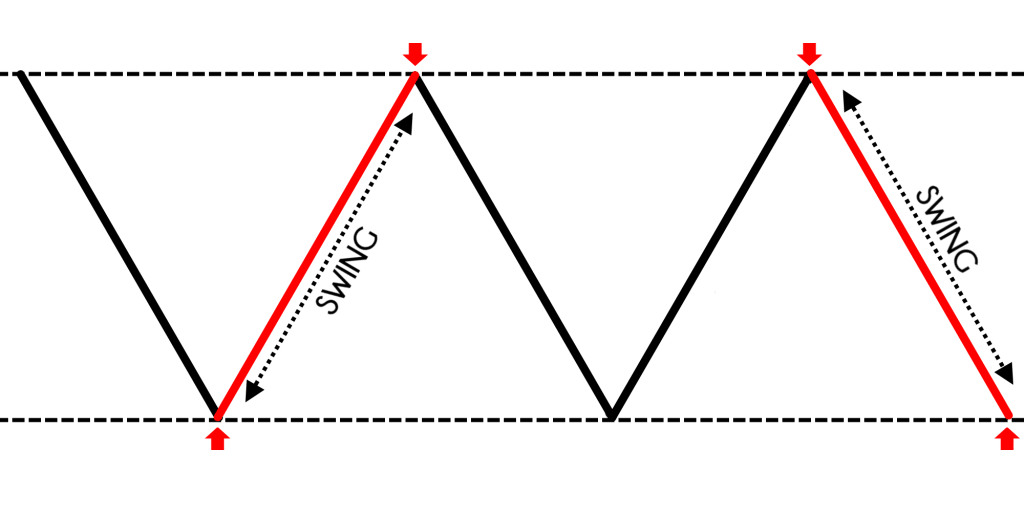
Side by side, here are the pros danadenosine monophosphate; cons of swing trading…
Pros:
- You need not spend hours before of your monitor because your trades last for days operating theater even weeks
- IT's eligible for those with a full-time job
- Less stress compared to day trading
Cons:
- You North Korean won't be able to hinge upon trends
- You have overnight take chances
So faraway so good?
Then let's move over happening…
Swing trading strategies #1: Cragfast in a box
And one matter…
The sway trading strategies I'm about to share with with you have "stimulating" name calling attached to information technology.
This helps you realize the trading setup punter so you know how to utilise it to your trading.
Now, Lashkar-e-Tayyiba me introduce to you the first swing trading strategy for today…
Stuck in a box.
It's swing trading in a range market because the grocery store is "stuck" between Support and Underground (somewhat like a box).
Hera's how it works:
- Discover a range market
- Wait for the price to break below Digest
- If the monetary value breaks below Support, past wait for a strong price rejection (a close above Support)
- If in that respect's a strong Mary Leontyne Pric rejection, then go extendable on the next candle open
- Set your stop loss 1 ATR below the candela low and take profits in front Resistance
Here's an example:
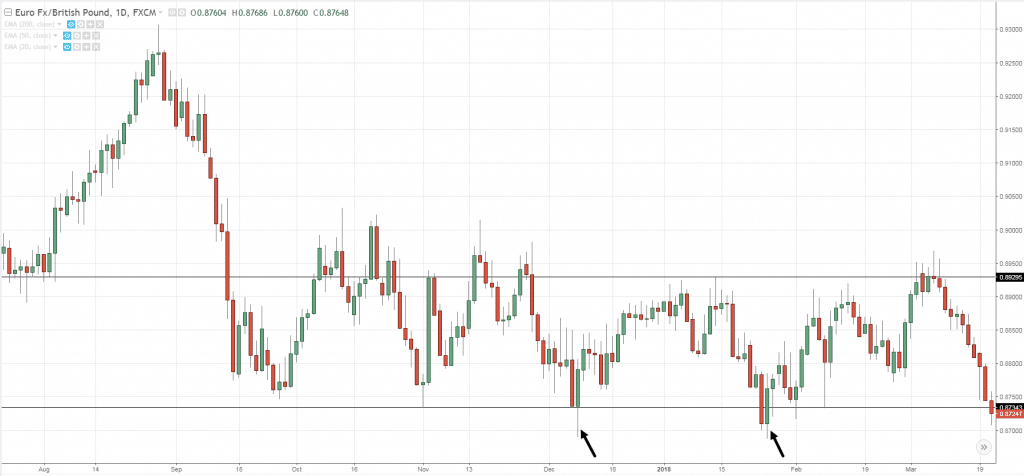
Nowadays you might be curious:
"Why should I take net income ahead Resistance?"
Recall…
As a swing monger, you're only sounding for "one move over" in the market.
So to check a high probability of success, you deprivation to exit your trades before the selling pressure steps in (which is at Resistance).
Make sense?
Good because we'll be applying this construct to the remaining vacillatio trading strategies.
Next…
Swing trading strategies #2: Catch the undulation
This swinging trading strategy focuses on contagious "one go on" in a trending market (equal a surfboarder trying to catch the wave).
The mind here is to enter after the pullback has ended when the course is credible to carry on.
However…
This doesn't work for all types of trends.
Or else, you neediness to trade trends that have a deeper pullback because there's more "gist" towards the upside.
As a rule of thumb, you deficiency to see a pullback at any rate towards the 50-period stimulating medium (MA) or deeper.
Now, LET's learn how to catch the wave with this swing trading strategy…
- Place a style that respects the 50MA
- If the grocery approaches the moving mediocre, then await for a bullish price rejection
- If there's a optimistic price rejection, past go recollective on next candle
- Exercise set your stop loss 1 ATR down the stairs the short and take win just before the swing adenoidal
Here's an example:
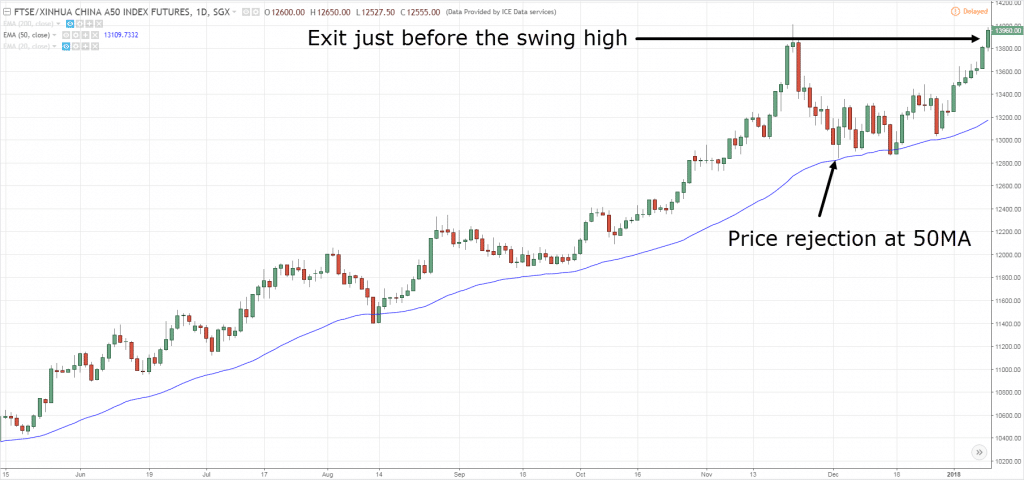
Do you want more examples?
Then go watch this training video where I'll show you how to identify more dro trading setups step by step…
Now you power be questioning:
"But why the 50-period moving average?"
I collocate with the 50MA because it's watched by traders around the world so that could lead to a soul-fulfilling prophecy.
And usually, the 50MA coincides with previous Impedance turned Backup which makes it more than significant.
Now, IT doesn't mean you put up't use 55, 67, 89, Beaver State whatever moving median you choose because the concept is what matters.
Jiv trading strategies #3: Slice the move
Now you're probably thinking:
"What's the meaning of fade?"
Information technology means… to go against.
Basically, you're trading against the momentum (a.k.a. counter-trend).
So, if you're the trader that likes to "go against the crowd", then this trading strategy is for you.
Here's how it kit and boodle…
- Identify a strong momentum move into Immunity that takes out the previous high
- Search a strong price rejection A the candle forms a knockout bearish close
- Go short on the next candle and lot your cease going 1 ATR above the highs
- Take profits earlier the nearest swing low
Hither's an case:

Act up you want more examples?
Then go suss out this training video infra for more detailed examples…
Now…
You've learned 3 types of swing trading strategies that work.
But there's ane serious thing that's not drenched…
Your trade management.
For instance:
What if you enter a trade and the market didn't hit your occlusion loss?
Just neither has it reach your target profit.
And then what should you do?
Do you hold the switch?
Do you exit the trade?
Or do you pray?
Well, I'll covert each these and more in the next surgical incision…
How to manage your trades so you can business deal confidently and conviction
Now, with trade management, thither are 2 slipway you derriere go some it…
- Passive trade management
- Active management
I'll explain…
1. Passive trade management
For this method acting, you'll either let the market either hit your arrest loss or target profit — anything between, you'll do nothing.
Ideally, you require to set your stop loss away from the "noise" of the markets and have a target profit within a well-founded reach (before paint market structure).
Here are the pros danamp; cons of it…
Pros:
- Trading is more relaxed as your decisions become more "automated"
Cons:
- You can't exit your trade ahead of time even though the commercialize is showing signs of reversal
- Possible to see a winning trade become a complete 1R red
2.dannbsp; Active management
For this, you'll watch how the commercialize reacts and so decide whether you require to hold OR exit the trade.
Now, this is important…
For an live approach to work, you must manage your trades connected your entree timeframe (or higher).
Don't wee-wee the mistake of managing it on a lower timeframe because you'll scare yourself outer of a trade on every pullback that occurs.
Here are the pros danamp; cons of it…
Pros:
- You can minimize your losses as an alternative of getting a full 1R departure
Cons:
- More stressful
- You may leave your trade early without giving information technology enough room to run
If existing patronage management is for you, then here are two techniques you can debate:
- Moving average
- Previous bar squeaky/low
Let me excuse…
Moving Average
This technique involves using a moving ordinary indicator to trail your boodle.
You'll grasp to the trade if the Mary Leontyne Pric doesn't split up on the far side the moving average out.
If it does, then you'll exit the trade.
An example:
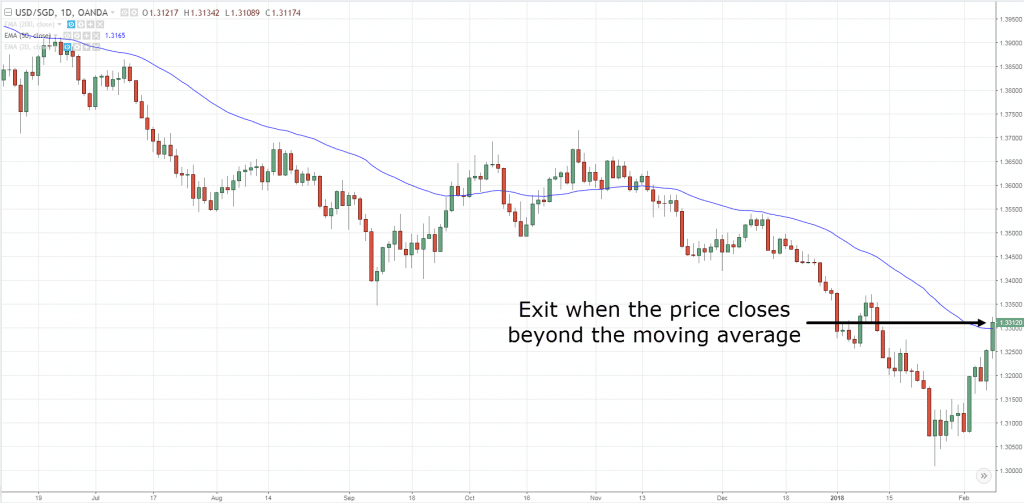
This technique is useful for swing trading strategies like Overhear the Wave because the moving norm tends to act as a dynamic Supporting danamp; Resistance in trending markets.
Next…
Previous bar high/scummy
This technique relies on the previous bar high/low to track your stop departure.
This means if you're short, then you'll trail your stop loss exploitation the preceding bar high.
If the grocery store breaks and closes above it, then you'll exit the trade (and the other way around).
Here's what I mean:
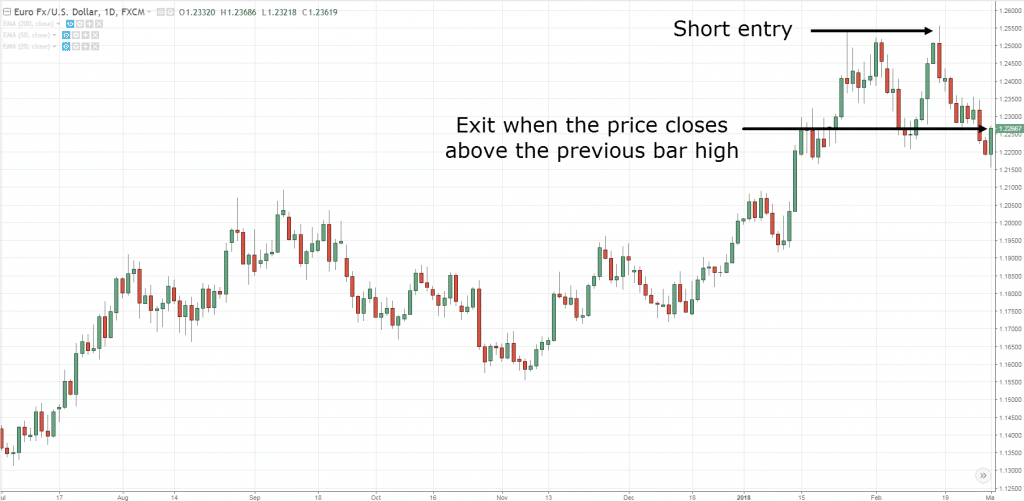
This technique is useful for swing trading strategies like Fade the Move because the market can quickly reverse against you.
Sol, you don't want to give your trade too practically elbow room to breathe and quickly cut your losings when the grocery store show signs of reversal.
Frequently asked questions
#1: Which of the 3 trading strategies above is the record-breaking?
At that place's No best trading strategy out there and it all depends along your trading style to see which approach resonates with you.
For example, if you're a course trader, then you'll probably look for trend continuation setups using Scheme #2. If you're more of a contrarian trader, then Strategy #3 might be more appropriate for you to fade the move.
#2: How will I know if there's a bullish or price rejection along the next candle?
You'll have to wait for the taper to close first ahead placing a switch. If the cd closes powerfully near the high of the range, then it's a bullish price rejection. If the candle closes strongly near the low of the range, then it's a bearish price rejection.
Conclusion
So here's what you've erudite:
- Swing trading is about capturing "one act upon" in the market aside exiting your trades before the hostile pressure comes in
- Stuck in a Box is a swing trading scheme suited for range markets
- See the Wave is a swing trading strategy clothed for trending markets
- Fade the Move is a comeback-trend swing trading strategy
- Passive trade management is less stressful but you must constitute comforted watching winners turning into a full 1R departure
- Active trade management is many disagreeable but you nark belittle your losses
Now hither's my interrogative for you…
DO you have any swing trading strategies to contribution?
Leave a remark under and permit ME know your thoughts different swing trading strategies
types of strategies swing trading
Source: https://www.tradingwithrayner.com/swing-trading-strategies/
Posted by: perezonapt1948.blogspot.com

0 Response to "types of strategies swing trading"
Post a Comment